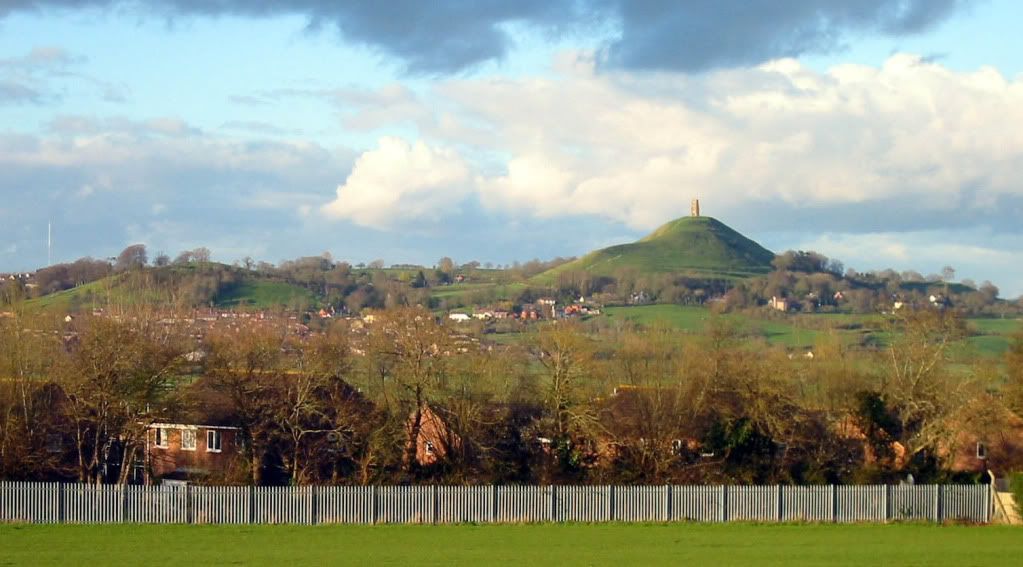Joseph of Arimathea – a Glastonbury Legend
 The town of Glastonbury stands on a peninsula in the Somerset Levels, an area of wetlands, 31 miles south of Bristol in south-west England. The area is dominated by the steep, conical Tor, a prominent landmark rising island-like from the surrounding level landscape.
The town of Glastonbury stands on a peninsula in the Somerset Levels, an area of wetlands, 31 miles south of Bristol in south-west England. The area is dominated by the steep, conical Tor, a prominent landmark rising island-like from the surrounding level landscape.
The small size of the town belies its prominent place in the legends and myth-history of Britain. Apart from the mysterious Tor, there is the 7th century Glastonbury Abbey, an Iron Age lake village a few miles to the north west, as well as links with King Arthur, the Holy Grail and Joseph of Arimathea. It is this last connection that we are concerned with here.
On current historical evidence the foundation of Glastonbury Abbey in the form of a Benedictine monastery under Beorhtwald, its first Saxon abbot, can be dated no further back than the AD 670. Although tradition states that an older “wattle and daub”, Celtic Christian church stood on the site, no evidence of this structure has been discovered as yet. Such dates would make the Abbey’s origin and development as a sacred or religious site later than, and consequently secondary to, that on Glastonbury Tor.
The archaeological evidence for the history of the Abbey contrasts somewhat with the prestige bestowed upon it in medieval legend. Much of the legend and some of the history of Glastonbury Abbey originates with William of Malmesbury’s De Antiquitate Glastoniensis Ecclesiae (‘Enquiry into the Antiquity of the Church of Glastonbury’), a work begun somewhere between 1129 and 1135. When William of Malmesbury wrote his ‘Enquiry’, Glastonbury Abbey was on the point of ruin, with its buildings in a dilapidated condition and the monks barely having enough to live on.
It was Henry de Blois, the Abbot at Glastonbury, who brought William to the monastery, initially to compose biographies of various saints associated by tradition with the monastery. For some reason William was unable to complete these works and instead produced his De Antiquitate Glastoniensis Ecclesiae. In this ‘history’ William calls the Abbey “the oldest church in England,” and records that some time in the latter half of the second century AD Pope Eleutherius sent the missionaries, Faganus and Deruvianus (Phagan and Deruvian), from Rome to the island of Britain to preach the Gospel. William also claimed to have seen documents which stated that “No other hands than those of the Disciples of Christ erected the church of Glastonbury.”
William of Malmesbury was one of a number of professional historians and hagiographers used by monastic communities to create semi-legendary histories of their monasteries and lives of their saints. Connections with important saints and histories stretching back to the foundation of Christianity were desirable for a monastery dependent on its prestige to attract pilgrims and donations. These concerns were so vital to the existence of Glastonbury Abbey that when the monks made copies of William of Malmesbury’s book, they inserted fictitious passages into the work, describing Joseph of Arimathea as the leader of a group of twelve disciples of Jesus who came to Britain in AD 63.
During the later Middle Ages this legend of Joseph of Arimathea was gradually built up, so that by the late 15th century Glastonbury was touted as the birthplace of British Christianity, where Joseph erected the first church to house the Holy Grail. There was also a legend that Joseph had earlier visited Glastonbury along with the child Jesus, a tale which later inspired William Blake (1757-1827) to compose the poem that became the words to the English hymn ‘Jerusalem’.
Pages: 1 2




